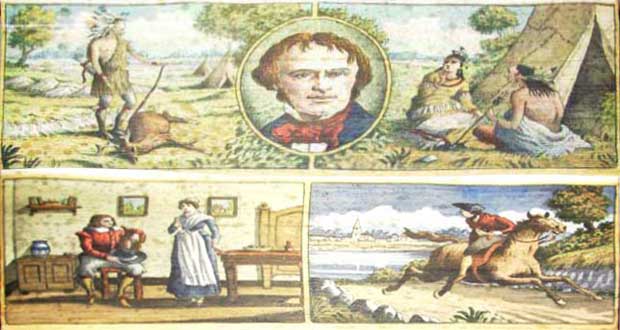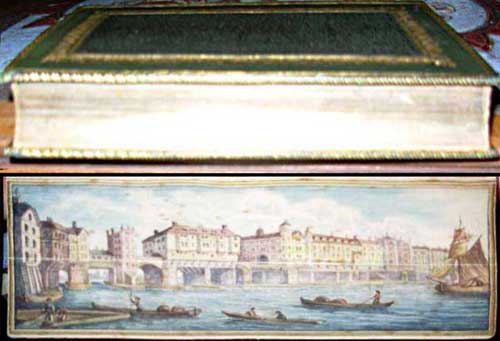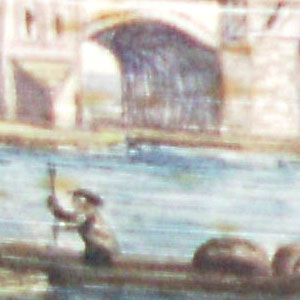H. W. Longfellow’s Poetical Works
The technique of fore-edge painting was developed in the middle of the 17th century, but came of age in the 19th century. The method requires fanning the pages. Then, a water color painting is done on the fanned leaves. When dry, the fore-edge would be gilt or marbled. With this concealment, the painting remains unseen unless the fore-edge is fanned. The first two paintings are on the previous Longfellow’s book. The painter is unknown. The book was bound by D. Räder.

Milton’s Poetical Works
This fore-edge painting on Milton’s Poetical Works represents the Old London Bridge. It was painted by renowned artist Martin Frost in 1997. Martin’s website is www.foredgefrost.co.uk

Closeup of Fore-Edge painting
